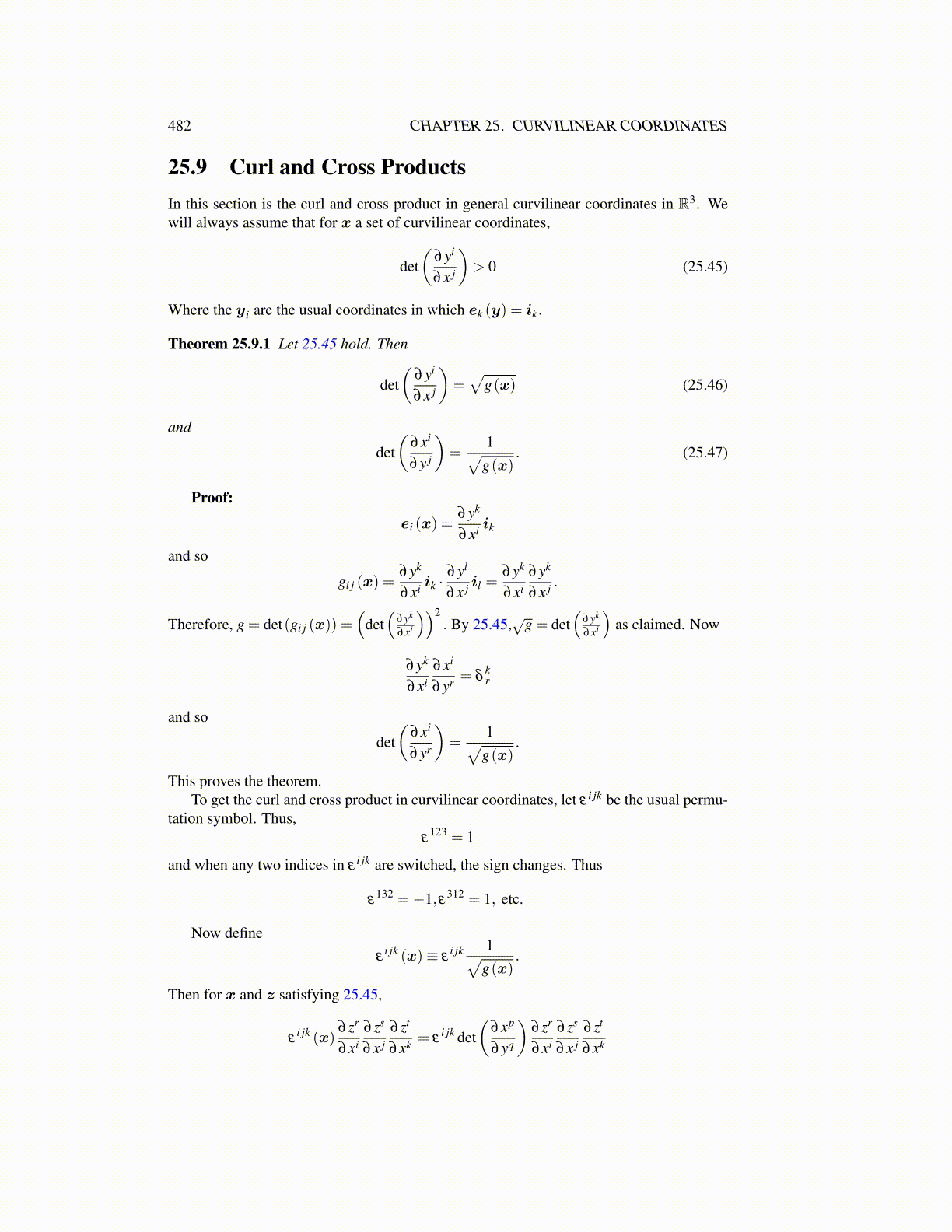
482 CHAPTER 25. CURVILINEAR COORDINATES
25.9 Curl and Cross ProductsIn this section is the curl and cross product in general curvilinear coordinates in R3. Wewill always assume that for x a set of curvilinear coordinates,
det(
∂yi
∂x j
)> 0 (25.45)
Where the yi are the usual coordinates in which ek (y) = ik.
Theorem 25.9.1 Let 25.45 hold. Then
det(
∂yi
∂x j
)=√
g(x) (25.46)
and
det(
∂xi
∂y j
)=
1√g(x)
. (25.47)
Proof:
ei (x) =∂yk
∂xi ik
and so
gi j (x) =∂yk
∂xi ik ·∂yl
∂x j il =∂yk
∂xi∂yk
∂x j .
Therefore, g = det(gi j (x)) =(
det(
∂yk
∂xi
))2. By 25.45,
√g = det
(∂yk
∂xi
)as claimed. Now
∂yk
∂xi∂xi
∂yr = δkr
and so
det(
∂xi
∂yr
)=
1√g(x)
.
This proves the theorem.To get the curl and cross product in curvilinear coordinates, let ε i jk be the usual permu-
tation symbol. Thus,ε
123 = 1
and when any two indices in ε i jk are switched, the sign changes. Thus
ε132 =−1,ε312 = 1, etc.
Now defineε
i jk (x)≡ εi jk 1√
g(x).
Then for x and z satisfying 25.45,
εi jk (x)
∂ zr
∂xi∂ zs
∂x j∂ zt
∂xk = εi jk det
(∂xp
∂yq
)∂ zr
∂xi∂ zs
∂x j∂ zt
∂xk